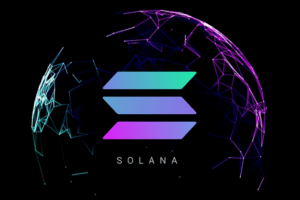The blockchain ecosystem is constantly evolving, and Layer-2 solutions have emerged as a promising way to address the scalability and performance issues faced by many blockchain platforms. This article will explore the rise of Layer-2 solutions, how they are transforming the blockchain ecosystem, and the impact they could have on the future of cryptocurrencies and decentralized applications (dApps).
What are Layer-2 Solutions? Layer-2 solutions are protocols built on top of existing blockchain platforms, such as Ethereum or Bitcoin, that aim to improve transaction throughput, decrease latency, and reduce fees. By offloading a significant portion of computational work from the base layer (Layer-1) to a secondary layer, these solutions can offer faster and more efficient transactions without compromising security or decentralization.
Types of Layer-2 Solutions: There are several types of Layer-2 solutions currently in development or already implemented:
- State Channels: State channels allow multiple participants to transact off-chain while still maintaining the security guarantees of the underlying blockchain. Payments and smart contracts can be executed instantly and at low cost, with only the final state of the channel being settled on the main chain.
- Plasma: Plasma is a framework for building scalable and secure child chains that run parallel to the main chain. By offloading transactions to these child chains, the main chain can remain secure and focused on processing high-value transactions or providing data anchoring services.
- Rollups: Rollups are a technique for bundling multiple off-chain transactions into a single on-chain transaction. There are two main types of rollups: Optimistic Rollups and Zero-Knowledge (ZK) Rollups. Both techniques use cryptographic proofs to ensure the validity of off-chain transactions, but ZK-Rollups rely on zero-knowledge proofs for added privacy and efficiency.
- Sidechains: Sidechains are independent blockchains that run parallel to the main chain and have their own consensus mechanisms. They allow for the transfer of assets between the main chain and the sidechain, providing additional functionality and scalability.
The Impact on the Blockchain Ecosystem: Layer-2 solutions are poised to revolutionize the blockchain ecosystem by addressing many of its current limitations:
- Scalability: By offloading transactions and computation to secondary layers, Layer-2 solutions can significantly increase transaction throughput and allow blockchain platforms to support more users and applications.
- Cost Reduction: Off-chain transactions and computations can be executed at a fraction of the cost of on-chain transactions, making it more feasible for dApps and users to interact with the blockchain.
- Improved User Experience: Faster transaction times and reduced fees can lead to a better user experience, which is essential for driving mainstream adoption of cryptocurrencies and dApps.
- Enabling New Use Cases: Layer-2 solutions can support new and innovative use cases, such as microtransactions, high-frequency trading, and privacy-focused applications, that may not have been possible on Layer-1 platforms.
Conclusion: The rise of Layer-2 solutions is transforming the blockchain ecosystem and addressing many of the challenges that have hindered the growth and adoption of cryptocurrencies and dApps. As these technologies continue to mature and gain traction, they will play a crucial role in shaping the future of the blockchain industry and unlocking its full potential.























